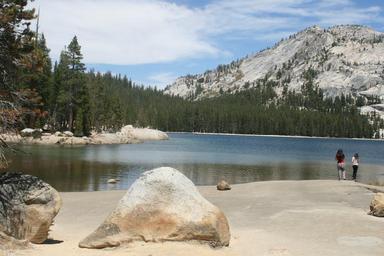Introduction
In an age where the lens can capture moments with incredible precision, the art of photography has evolved into a profound medium for exploring human experiences. "Joyful Exploration of Human Experiences through Aesthetic Imagery" is not merely a phrase; it embodies the essence of artistic expression that intertwines our narratives with the world around us. Photography—whether it be self-portrait photography, fine art photography, or any other genre—serves as a gateway to understanding ourselves and the environments we inhabit.
This article delves deeply into aesthetic photography, showcasing how various styles—such as black and white photography, tarnished color photography, and more—can articulate human emotions and stories. From capturing decay in moss-covered ruins to reaching for the sky in blooming life amidst urban landscapes, we will explore how these visual narratives unfold before our eyes.
Joyful Exploration of Human Experiences through Aesthetic Imagery
The Essence of Aesthetic Photography
Aesthetic photography transcends mere representation; it captures diverse human experiences and emotions through the lens. By focusing on beauty and form, photographers create compelling images that evoke feelings—joy, nostalgia, melancholy—that resonate with viewers. This exploration not only celebrates visual aesthetics but also invites contemplation about deeper themes inherent in human existence.
Self-Portrait Photography: A Journey Within
Understanding Self-Portraiture
Self-portrait photography is more than just a snapshot; it's an intimate dialogue between the artist and their audience. It provides a unique opportunity for self-exploration through photography. Artists can use various techniques to convey their thoughts and emotions while inviting viewers into their private worlds.
Techniques for Capturing Introspection
Utilizing tools like self-timers allows photographers to engage creatively with their surroundings without relying on someone else’s perspective. The resulting images become both personal expressions and universal reflections of shared human experiences.
Fine Art Photography: Elevating Narrative Through Composition
What Defines Fine Art Photography?
Fine art photography blurs the line between art and documentation. It emphasizes creativity over traditional representations of reality. By constructing images https://newperspectives175.bravesites.com/entries/general/Navigating-Vulnerability-through-the-Lens-of-an-Artist-s-Eye that are carefully composed, photographers craft visual stories that elicit emotional responses from viewers.
The Role of Artistic Expression in Fine Art
Artistic expression is vital in fine art photography. It challenges conventions while embracing new ideas about life themes in photography. This genre often incorporates elements such as narrative arcs or symbolic imagery to deepen viewer engagement.
Black and White Photography: Timelessness Captured
The Power of Monochrome
Black and white photography strips away distractions caused by color, allowing light, shadow, and texture to take center stage. This style often evokes nostalgia while highlighting contrasts inherent in human experiences—the playful juxtaposition between joy and sorrow.
Creating Emotion Through Contrast
By manipulating contrast within monochrome images, photographers can emphasize particular emotions or themes such as growth versus decay or love versus loss—an essential aspect of narrative photography.
Tarnished Color Photography: Embracing Imperfections
What Is Tarnished Color Photography?
Tarnished color photography embraces imperfections often found in aging structures or everyday objects. It highlights how beauty exists within decay—a celebration of life’s transient nature.
Capturing Beauty in Ruins
Exploring moss-covered ruins in photography offers artists a canvas where nature reclaims its space against man-made structures. These photographs tell stories filled with history while reminding us that all things eventually return to dust.
Ruin and Bloom in Photography: Nature's Duality
Understanding Ruin vs Bloom Dynamics
The concept of ruin versus bloom presents a powerful metaphor for human existence—showcasing resilience amid adversity or beauty emerging from destruction. Through photographic imagery, one can illustrate this duality vividly.
Juxtaposing Life Themes Through Imagery
Using techniques like shutter speed experiments allows artists to freeze moments where blooming life coexists alongside crumbling structures—inviting viewers to reflect upon their journeys through time.
Moss-Covered Ruins: Nature Reclaiming Spaces
Symbolism Behind Overgrown Ruins
Moss-covered ruins serve as poignant symbols representing nature's reclamation efforts over time—illustrating themes such as growth amidst decline or hope sprouting from despair.
Incorporating Vegetation into Compositions
Photographers can enhance their compositions by incorporating vegetation into images featuring old constructions—a reminder that life persists even when surrounded by decay.
Reaching for the Sky: Aspirations Captured Visually
Visualizing Human Aspirations Through Imagery
Photographs depicting figures reaching toward expansive skies symbolize hopefulness—the innate desire humans possess to transcend limitations set by their circumstances.
1. Using Perspective Effectively
By experimenting with angles during shoots (e.g., low angles), photographers can create dynamic compositions that invite viewers into aspirational narratives grounded within daily realities.
2. Balancing Light & Shadow
Careful manipulation of light enhances these themes further; bright backgrounds juxtaposed against silhouetted subjects echo sentiments tied closely to personal growth journeys undertaken over time.
Human Narratives Interwoven With Nature’s Canvas
Crafting Stories Through Aesthetic Fine Art Photography
Aesthetic fine art encompasses a broad spectrum—from exploring personal struggles depicted symbolically within natural landscapes down to intimate portrayals reflecting individual identities shaped by culture/environmental factors alike!
1. Personal Growth Reflected In Art
Each photograph tells its own story about transformation; utilizing narrative techniques helps weave together threads connecting diverse experiences shared collectively across generations/cultures worldwide!
2. Emphasizing Connections Between Humans And Nature
Photography serves as an essential bridge linking humanity back towards its roots—inspired by observations made throughout history concerning relationships forged between individuals & landscapes surrounding them!
Withering Beauty: The Poetics Of Decay In Imagery
What Does Withering Beauty Mean?
Withering beauty reflects transient aspects associated with aging processes encountered both physically (nature) & emotionally (humans).

1. Depicting Vulnerability Through Visuals
Images showcasing faded petals alongside crumbling walls resonate deeply within audiences familiarized over time via personal encounters centered around fragility inherent across existence itself!
2. Invoking Contemplative Art Practice
Art becomes contemplative when discussing themes such as mortality—it encourages introspection whilst revealing vulnerabilities embedded within everyone’s lives!
FAQs
1. What is aesthetic photography?
Aesthetic photography focuses on creating visually pleasing images that evoke emotions or thoughts beyond traditional representations of reality.
2. How does self-portraiture contribute to artistic expression?
Self-portraiture allows artists to explore their identities intimately while conveying personal narratives through imagery, enhancing connections with audiences who relate to those experiences.
3. What is fine art photography?
Fine art photography prioritizes creativity over documentation; it involves crafting compelling visual narratives rather than solely capturing moments realistically.
4. Why is black and white photography significant?
Black-and-white photographs emphasize contrasts between light/shadow textures without distraction from colors—they evoke nostalgia while providing timeless quality appreciated universally.
5. What role do ruins play in aesthetic imagery?
Ruins symbolize nature's reclaiming efforts against man-made structures—they highlight transience/longevity interspersed throughout histories shared among different cultures globally!
6. How does nature interact with human experiences captured visually?
Nature often serves both backdrop & metaphor representing complexities tied closely around individual journeys intertwined deeply rooted relationships established over generations past/present/future!
Conclusion
In conclusion, the journey through “Joyful Exploration of Human Experiences through Aesthetic Imagery” opens up vast realms for reflection on our lives intertwined with artistic expression captured visually within frames! As we navigate complexities surrounding identity/narratives defined personally/universally alike—we must appreciate beauty found amidst contrasts embodied across photographs originating from various styles such as self-portraiture/fine-art/black-and-white/tarnished-color approaches available today!
Through inventive techniques (shutter speed experiments) combined alongside thoughtful compositions emphasizing connections forged between humanity/nature—we unlock avenues leading deeper understandings surrounding resilience/growth symbolized elegantly throughout time itself!
